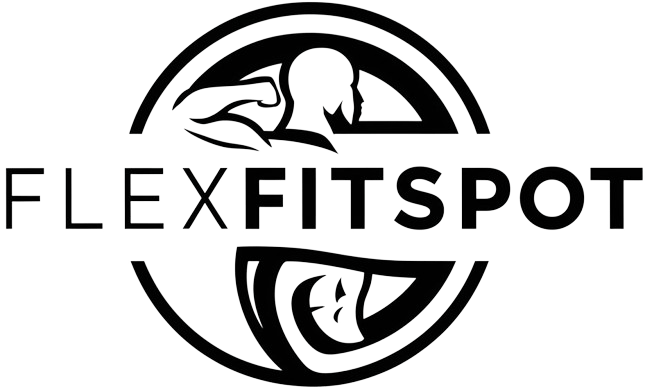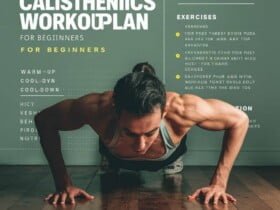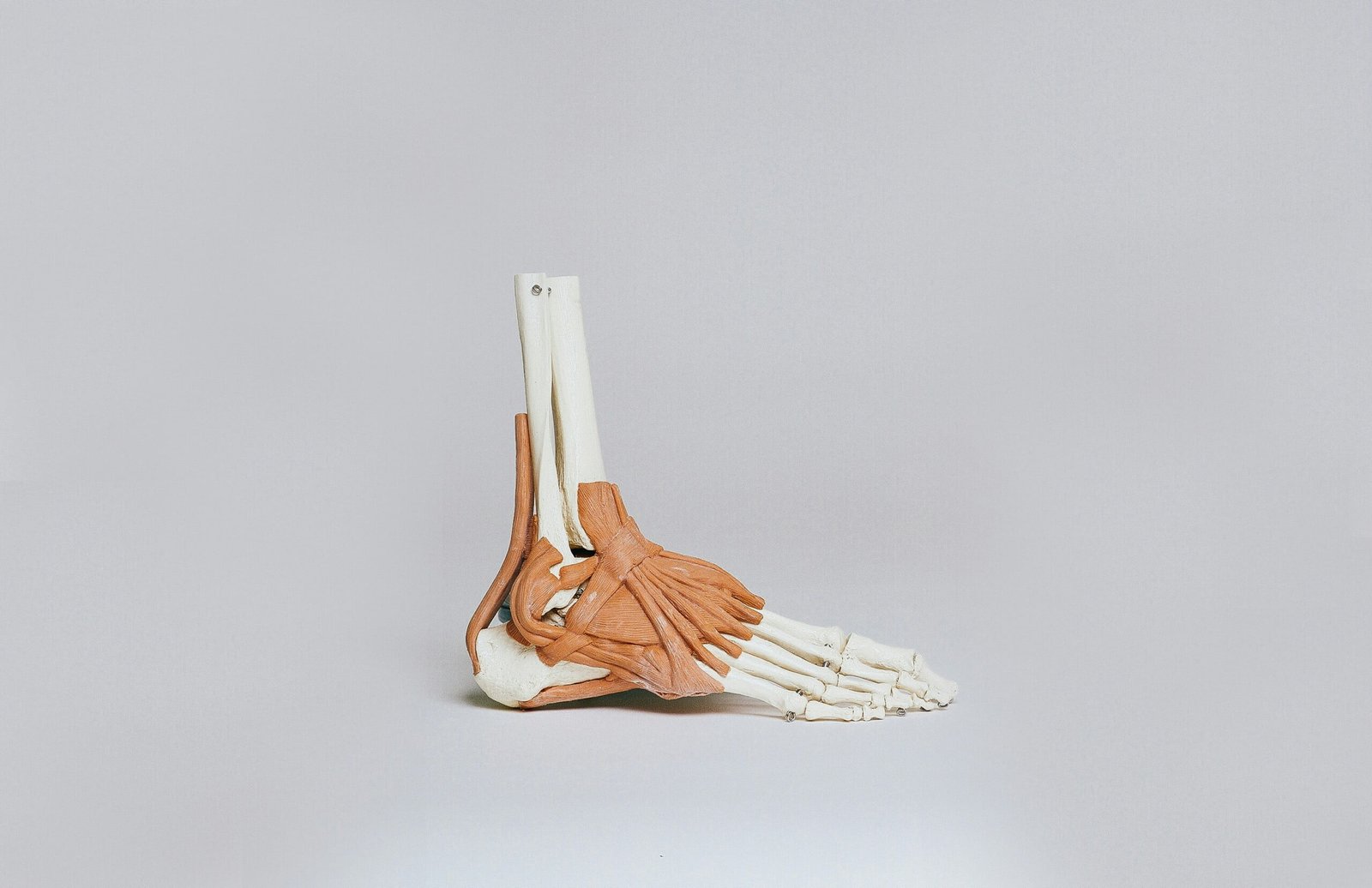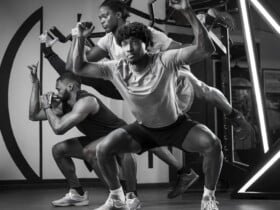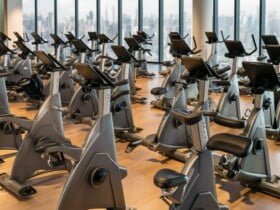Introduction to Calisthenics Back Workout
Calisthenics, a dynamic form of exercise that emphasizes bodyweight movements, has gained significant traction in 2024. This workout method is celebrated for its simplicity and effectiveness, particularly in developing a strong and toned back. Unlike traditional weightlifting, calisthenics does not require extensive equipment or access to a gym, making it an incredibly versatile option for fitness enthusiasts of all levels.
The surge in popularity of calisthenics can be attributed to its numerous advantages. Firstly, it promotes functional strength, which is the kind of strength used in everyday activities. This is achieved through compound movements that engage multiple muscle groups simultaneously, enhancing coordination and balance. For back development, exercises such as pull-ups, rows, and planks are integral, targeting the upper, middle, and lower back muscles effectively.
Additionally, calisthenics offers a lower risk of injury compared to traditional weightlifting. Since the exercises rely on natural body movements, they reduce the strain on joints and connective tissues. This makes it a safe and sustainable option for individuals of all ages. Moreover, the adaptability of calisthenics allows for gradual progression, meaning that as one’s strength and skill level increase, the complexity of the exercises can be adjusted accordingly.
One of the most compelling aspects of calisthenics is its accessibility. Whether you are at home, in a park, or traveling, you can perform a comprehensive back workout with minimal equipment, such as a pull-up bar or resistance bands. This eliminates the need for a gym membership and enables individuals to maintain their fitness routine consistently, regardless of their location or schedule.
Incorporating calisthenics into your fitness regimen not only enhances physical strength but also fosters mental resilience. The discipline and perseverance required to master bodyweight movements translate into a heightened sense of accomplishment and well-being. As we delve deeper into the ultimate calisthenics back workout plan for 2024, it becomes evident why this timeless exercise form continues to captivate and benefit fitness enthusiasts worldwide.
Understanding Back Anatomy and Function
The back is a complex and integral part of the human body, consisting of several major muscles that play crucial roles in movement, posture, and overall fitness. Key among these muscles are the latissimus dorsi, trapezius, rhomboids, and erector spinae, each contributing uniquely to our physical capabilities and structural stability.
The latissimus dorsi, or “lats,” are the broadest muscles in the back, extending from the lower spine to the upper arm. These muscles are essential for movements involving the arms, such as pulling and lifting. They are heavily engaged in exercises like pull-ups and rows, making them a focal point in any back workout plan.
The trapezius, commonly referred to as the “traps,” are large triangular muscles that span the upper back and neck. They are divided into three parts: the upper, middle, and lower traps. The trapezius muscles are responsible for movements such as shrugging, rotating, and stabilizing the scapula, playing a significant role in maintaining proper posture and shoulder function.
The rhomboids are smaller muscles located between the shoulder blades. They work in synergy with the trapezius to retract the scapula, which is crucial for maintaining an upright posture. Strengthening the rhomboids can help alleviate back pain and improve the overall alignment of the spine.
The erector spinae are a group of muscles that run vertically along the spine. They are vital for extending and rotating the back, as well as maintaining an erect posture. These muscles are engaged during activities such as bending forward, lifting objects, and performing back extensions.
A strong back is fundamental for overall fitness and injury prevention. Robust back muscles enhance athletic performance by providing a stable foundation for various movements, reducing the risk of injuries, and improving posture. Incorporating exercises that target these muscles into your calisthenics routine can lead to significant improvements in strength, flexibility, and overall physical health.
Key Principles of Calisthenics Back Workout
Calisthenics back workout hinges on several fundamental principles that ensure both effectiveness and safety. One of the cornerstone concepts is progressive overload. This principle involves gradually increasing the resistance or intensity of exercises to stimulate muscle growth and strength. In calisthenics, progressive overload can be achieved by modifying the leverage of exercises, increasing the number of repetitions, or incorporating advanced variations of basic movements such as pull-ups and rows.
Another crucial element is maintaining proper form. Executing exercises with correct technique not only maximizes the engagement of target muscles but also minimizes the risk of injury. For instance, during pull-ups, it’s essential to keep the core tight, shoulders retracted, and movement controlled to ensure the back muscles are effectively targeted.
The muscle-mind connection is also pivotal in calisthenics back workout. This concept emphasizes the importance of consciously engaging the back muscles during exercises. By focusing on the contraction and elongation of the muscles, individuals can enhance the quality of each repetition, leading to improved muscle activation and growth.
Consistency cannot be overstated when it comes to calisthenics back workout. Regularly performing back exercises ensures steady progress and helps in building both strength and endurance over time. Adhering to a well-structured workout plan and avoiding long breaks between sessions are key to achieving long-term results.
Finally, adequate recovery is fundamental. The muscles need time to repair and grow stronger after being subjected to intense workouts. Incorporating rest days, ensuring sufficient sleep, and maintaining proper nutrition are all critical components of an effective recovery strategy.
By integrating these principles—progressive overload, proper form, muscle-mind connection, consistency, and recovery—into your calisthenics back workout plan, you can optimize muscle development and achieve a well-defined, strong back.
Essential Calisthenics Back Workout
Calisthenics presents a versatile and efficient approach to back development, leveraging bodyweight exercises to build strength and muscle. Among the most effective calisthenics exercises for the back are pull-ups, chin-ups, inverted rows, back levers, and bodyweight deadlifts. Each exercise targets different muscle groups within the back, ensuring comprehensive development.
Pull-ups are fundamental for back training, engaging the latissimus dorsi, trapezius, and rhomboids. To perform a pull-up, grip the bar with palms facing away, hands shoulder-width apart. Hang with arms fully extended, then pull your body up until your chin clears the bar. Lower yourself back to the starting position in a controlled manner. Beginners can use resistance bands for assistance, while advanced practitioners can add weight for increased intensity.
Chin-ups, similar to pull-ups, primarily target the biceps and upper back. The key difference is the grip: palms face towards you. This exercise can be performed with a full range of motion to maximize muscle activation. Variations such as weighted chin-ups or using a narrower grip can add diversity to your routine.
Inverted rows are excellent for mid-back development. Using a bar at waist height, lie beneath with your chest aligned to the bar. Grip the bar with palms facing away, and pull your chest towards the bar, keeping your body straight. Lower yourself back down with control. Adjusting the bar height or elevating your feet can alter the difficulty level.
Back levers are an advanced calisthenics move that enhances core and back strength. From a pull-up bar, invert your body, aiming to maintain a straight line from head to toe. Engage your core and back muscles to hold the position. Beginners can start with tucked or one-leg variations before progressing to the full lever.
Bodyweight deadlifts mimic traditional deadlifts but without weights. Stand with feet shoulder-width apart, hinge at the hips, and reach towards the floor, maintaining a straight back. Engage your back and hamstrings to return to standing. This exercise can be made more challenging by using one leg at a time or increasing the range of motion.
Incorporating these essential calisthenics exercises into your workout plan will ensure balanced and effective back development. Tailor each exercise to your fitness level, progressively increasing difficulty to continue making gains.
Creating a Balanced Calisthenics Back Workout Plan
Designing a balanced calisthenics back workout plan requires a strategic approach to ensure comprehensive muscle engagement and steady progression. Whether you are a beginner or a seasoned practitioner, your routine should harmonize pulling and pushing movements, include adequate rest, and allow for progressive intensity increases.
For beginners, starting with fundamental exercises is crucial. A typical routine might include:
- Pull-ups: 3 sets of 5 reps
- Australian rows: 3 sets of 10 reps
- Plank holds: 3 sets of 30 seconds
This foundational routine helps build the necessary strength and form. As you advance, you can gradually increase the number of reps and sets.
Intermediate practitioners can enhance their workout with more challenging variations and higher volume. A sample routine could be:
- Wide-grip pull-ups: 4 sets of 8 reps
- Archer rows: 4 sets of 10 reps
- Superman holds: 4 sets of 45 seconds
Incorporating these exercises ensures the upper back, lower back, and core muscles are effectively targeted.
Advanced calisthenics enthusiasts should aim to incorporate complex movements and higher intensity. An example routine might include:
- Muscle-ups: 5 sets of 5 reps
- One-arm pull-ups: 5 sets of 3 reps each arm
- Front lever holds: 5 sets of 20 seconds
These sophisticated exercises demand significant strength and control, fostering further progression and muscle development.
Balancing pulling and pushing movements is key to preventing imbalances and ensuring overall muscular development. Pairing back workouts with pushing exercises, such as push-ups or dips, helps maintain equilibrium.
Rest days are an essential component of any workout plan. They facilitate muscle recovery and growth, preventing overtraining and injuries. Depending on your fitness level, incorporate at least one to two rest days per week.
Progressive intensity is fundamental in calisthenics. Gradually increasing the difficulty of exercises, reps, and sets prevents plateaus and promotes continuous improvement. Listen to your body and make adjustments as necessary to optimize your calisthenics back workout plan.
Incorporating Mobility and Flexibility Training
Mobility and flexibility are critical components of a well-rounded calisthenics back workout plan. Ensuring that your back muscles and surrounding areas are adequately flexible and mobile can significantly enhance both performance and overall back health. Improved mobility allows for a greater range of motion, which is essential for executing calisthenics exercises correctly and efficiently.
One of the key benefits of incorporating mobility and flexibility training is injury prevention. Stiff or tight muscles can lead to improper form, increasing the risk of strains and other injuries. By integrating specific stretches and mobility drills, athletes can maintain optimal muscle length and joint health, thereby reducing these risks. For example, dynamic stretches such as arm circles and spinal twists help prepare the muscles and joints for the demands of calisthenics movements.
Static stretches play a crucial role in maintaining flexibility. Post-workout, it’s beneficial to perform stretches that target the back, such as the cat-cow stretch, child’s pose, and seated forward bends. These stretches not only aid in muscle recovery but also help in elongating the muscle fibers, making future workouts more effective and less taxing on the body.
Additionally, incorporating mobility drills into your routine can further enhance performance. Exercises like thoracic spine rotations and shoulder dislocations improve the mobility of the upper back and shoulders, which is particularly beneficial for exercises like pull-ups and muscle-ups. These drills ensure that the joints are moving freely and efficiently, allowing for smoother and more controlled movements.
Incorporating a blend of dynamic stretches, static stretches, and mobility drills into your calisthenics back workout plan can lead to significant improvements in flexibility and performance. This holistic approach not only optimizes exercise execution but also fortifies the body against potential injuries, paving the way for sustainable and progressive training.
Nutrition and Recovery Strategies
Proper nutrition and effective recovery strategies are pivotal components of any calisthenics back workout plan. They ensure that muscles repair and grow optimally, enhancing overall performance and reducing the risk of injury. Adequate protein intake is fundamental for muscle recovery and growth. It is recommended that individuals aiming for muscle hypertrophy consume approximately 1.6 to 2.2 grams of protein per kilogram of body weight daily. Sources of high-quality protein include lean meats, fish, eggs, dairy products, legumes, and plant-based alternatives like tofu and tempeh.
Hydration is another critical aspect of nutrition. Water supports muscle function, nutrient transport, and joint lubrication. It is advisable to drink at least 3.7 liters for men and 2.7 liters for women per day, with adjustments based on activity levels and climate conditions. Additionally, balanced meals rich in vitamins, minerals, and healthy fats are essential for overall health and workout efficiency. Incorporating a variety of fruits, vegetables, whole grains, and healthy fats such as avocados, nuts, and seeds ensures a well-rounded diet.
Recovery strategies are equally important in a calisthenics back workout plan. Quality sleep is paramount, as it is during sleep that the body performs most of its repair and growth processes. Adults should aim for 7-9 hours of sleep per night to facilitate optimal recovery. Active recovery, such as light stretching, yoga, or low-intensity activities, can help to promote blood flow and reduce muscle stiffness without overtaxing the muscles.
Additionally, tools like foam rollers and massage guns can be beneficial for alleviating muscle soreness and enhancing flexibility. Foam rolling can help to release muscle tightness and improve blood circulation, while massage guns can target deeper muscle tissues to relieve tension and promote faster recovery. Implementing these tools into your post-workout routine can significantly contribute to maintaining muscle health and performance.
Tracking Progress and Staying Motivated
Tracking progress is a fundamental element of any successful calisthenics back workout plan. An effective way to monitor your development is by keeping a detailed workout log. This log should include the exercises performed, the number of sets and repetitions, and any other relevant notes. By regularly updating your workout log, you can identify patterns, make necessary adjustments, and stay on top of your fitness journey.
Another useful method for tracking progress is taking progress photos. Visual documentation allows you to see tangible changes in your physique over time. To ensure consistency, take photos from multiple angles and under similar lighting conditions at regular intervals, such as bi-weekly or monthly. These images can be a powerful motivational tool, reminding you of how far you have come.
Setting achievable goals is also crucial for maintaining motivation. Start with short-term goals that are specific, measurable, attainable, relevant, and time-bound (SMART). For example, aim to increase the number of pull-ups you can do within a month. Gradually, these short-term goals will lead you towards larger, long-term objectives, keeping you engaged and focused on your calisthenics back workout plan.
Staying motivated can be challenging, but finding a workout partner can provide the accountability and support needed to stay on track. A workout partner can offer encouragement, share tips, and make workouts more enjoyable. If finding a local partner is difficult, consider joining online communities dedicated to calisthenics. These communities can provide a wealth of information, inspiration, and camaraderie.
Lastly at Calisthenics Back Workout
celebrating milestones, no matter how small, is essential for maintaining motivation. Recognize and reward yourself for achieving goals, whether it’s mastering a new exercise or hitting a personal record. These celebrations can boost your confidence and reinforce your commitment to your calisthenics back workout plan.
